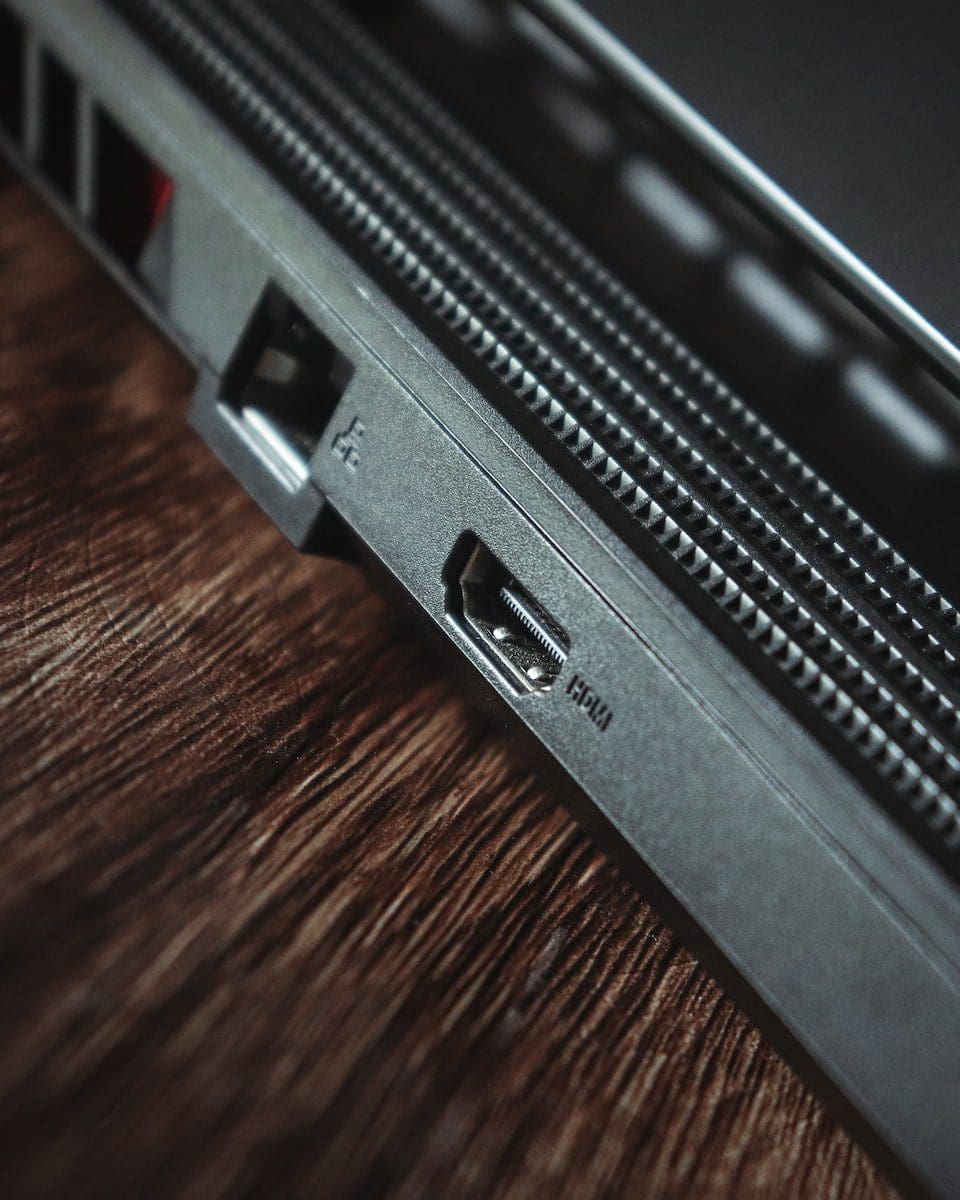HDMI stands for High Definition Multimedia Interface and is the industry system that links high-definition video equipment, as well as the famed Intel’s thunderbolt connector that has been associated with Apple for a long time now.
Most televisions and laptop computers today include at least one of the two ports. As a result, customers are frequently perplexed when deciding which port and cable to use based on their needs.
So, in this post, we’ll compare and contrast the differences and distinctions between HDMI and Thunderbolt to help you determine which module is better for your video and audio output needs.
Key Takeaways
- “Thunderbolt” is a high-speed data transfer and display interface that supports multiple protocols, while “HDMI” is a standard interface for transmitting uncompressed video and audio data.
- “Thunderbolt” supports a maximum data transfer rate of 40 Gbps, while “HDMI” supports a maximum data transfer rate of 18 Gbps.
- “Thunderbolt” is primarily used for connecting devices such as external hard drives, while “HDMI” is used for connecting devices such as TVs, monitors, and projectors.
Thunderbolt vs HDMI
The difference between Thunderbolt and HDMI is that Thunderbolt supports both video and data interface along with audio, whereas HDMI is a display connection that may be found on a variety of electrical gadgets like TVs and computers. The HDMI adapters were brought into the market by proprietorship from Panasonic, Hitachi, Phillips, Sony, etc., whereas the Thunderbolt was introduced by Intel Computers, which collaborated with Apple Co.

Thunderbolt is the premium brand for a hardware interface created by Intel and Apple that allows external devices to be connected to a system.
Thunderbolt is a relatively new idea that allows you to connect many devices to your laptop with a single operational cable. Over a single port, it delivers excellent displays and high-performance communications.
Thunderbolt connectors resemble USB-C ports in appearance, and the connector is technically identical from a plug-in standpoint.
Thunderbolt 3 (new generation) allows you to transport data at up to 40 Gbps and show multimedia. Thunderbolt is a single cable that integrates PCI Express (PCIe) and DisplayPort (DP) into two output signals, as well as providing DC power.
HDMI is the short form for ‘High Definition Multimedia Interface. HDMI is a digital interface that mixes audio and video for usage in video game consoles, Blu-ray discs, HDTVs, stereo receivers, and other devices.
HDTVs, DVRs, music players, and other consumer electronics devices all include HDMI connectors.
The EIA/CEA-861 standards cover video codecs and wavelengths, as well as the transmission of compression and unencrypted LPCM audio, auxiliary data, and VESA EDID implementations.
The HDMI is a widely used modular technology for video-audio clarity output by many manufacturers.
Comparison Table
| Parameters of Comparison | Thunderbolt | HDMI |
|---|---|---|
| Full Form | It has no full form however, thunderbolt was created and marketed under the brand name of Light Peak in Feb 2011. | High Definition Multimedia Interface; full form of HDMI. |
| Interface | Thunderbolt is an extremely high-speed PC link intel corporation in conjunction with Apple that operates at 10 gigabits per second and covers both the PCI Express and Mini Dp standards on a single cable. | HDMI is a brand name for an user device that employs high-definition (HD) signals to transmit multimedia content over a single cable. |
| Performance | Thunderbolt 1 and 2 enable data transmission speeds of up to 20 Gbps, whereas Thunderbolt 3 increases the speed to a staggering 40 Gbps while consuming the least amount of power | It used to support a maximum data clock rate of 165MHz, but with HDMI 1.3, this was extended to 340MHz, giving in a real data capacity of 8.16Gbps. |
| Connectivity | Uses type-c connectivity ports. | HEC (HDMI Ethernet Channel) |
| Introduced By | Intel computers. | Panasonic, Hitachi, Phillips, Sony, etc. |
What is Thunderbolt?
Thunderbolt is a new technology constructed by Intel and Apple in cooperation. Thunderbolt is the finest in external connection, making it ideal for attaching an external display or monitor, as well as an external hard drive, to your computer.
All MacBook Pro models have Thunderbolt ports, which are Apple’s primary emphasis for long-term Mac development.
It is plug-and-play, much like USBs, but it also lets you saddle chain several accessories, including monitors, storage devices, video recording cards, and more.
This means that instead of needing to plug each item into a different port on your MacBook, they all link to each other.
It’s the newest and quickest connection type available, and it’s perfect for attaching an additional display, monitor, or HDD to your PC. It’s a connector like USB, but it allows you to saddle chain several devices together.
Using the Thunderbolt connector to connect specific devices to your Mac is a wonderful alternative to using a FireWire connection.
Thunderbolt is far quicker than USB 3.0 or FTP, and it offers substantially more video capacity than HDMI. It’s a super-fast PC link that operates at 10 GB / s and covers both Parallel Port and Mini DisplayPort standards on a long wire.

What is HDMI?
The High-Definition Multimedia Interface (HDMI) is a patented technology audio/video application that allows HDMI-compliant adequacy of the instrument, such as a controller, to send uncompressed visual information and compressed or uncompressed digital audio data to a compatible monitor screen, DVD player, digital television, or digital audio device.
HDMI is a digital video standard that replaces analog video standards.
A proprietary video connection is the High-Definition Media Interface. HDMI ports may be found on nearly every piece of consumer technology, including televisions, computers, DVRs, and music systems.
Video output rates up to 4K (4096 x 2160p @ 60Hz) are supported through HDMI 2.0. HDMI 2.1, for example, may have compatibility for an 8k quality in the future.
HDMI transports extra signals in addition to high-quality audio and video across devices; it utilizes the DDC to define the features of an HDMI display, such as sizes, color depth, and audio. Via HEC, HDMI also allows for web sharing among devices (HDMI Ethernet Channel).
When it comes to cables, they are available in regular and elevated versions, as well as without even an ethernet connection. HDCP is also used to safeguard material on HDMI.
Furthermore, a single remote control may handle many CEC (Consumer Electronics Control)-enabled HDMI-connected devices.

Main Differences Between Thunderbolt and HDMI
- Thunderbolt is twice as fast as the traditional HDMI ports, and the read-write speed is also higher in thunderbolts.
- Thunderbolt 3 bandwidth can reach up to 40 Gbps while consuming very little power, whilst, in the case of HDMI, 1.3 340MHz is a breeze, giving in a real data throughput of 8.16GBps which is still lower than Thunderbolt.
- Thunderbolt was marketed under the brand name Light Peak in Feb 2011, whereas HDMI stands for High Definition Multimedia.
- Thunderbolt was launched by Intel computers, whereas HDMI was collectively launched by Panasonic, Hitachi, Phillips, Sony, and other leading brands.
- Thunderbolt is newer and more capable when compared to HDMI technology.






